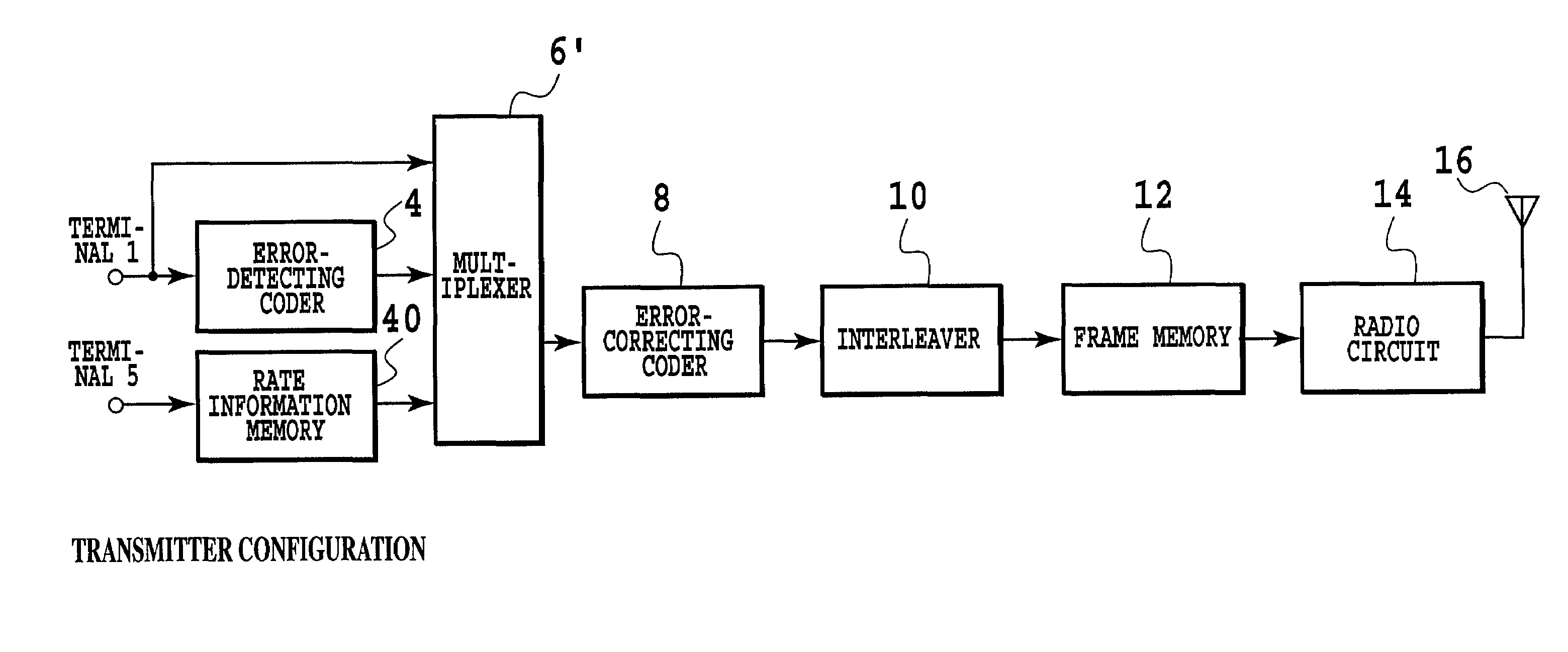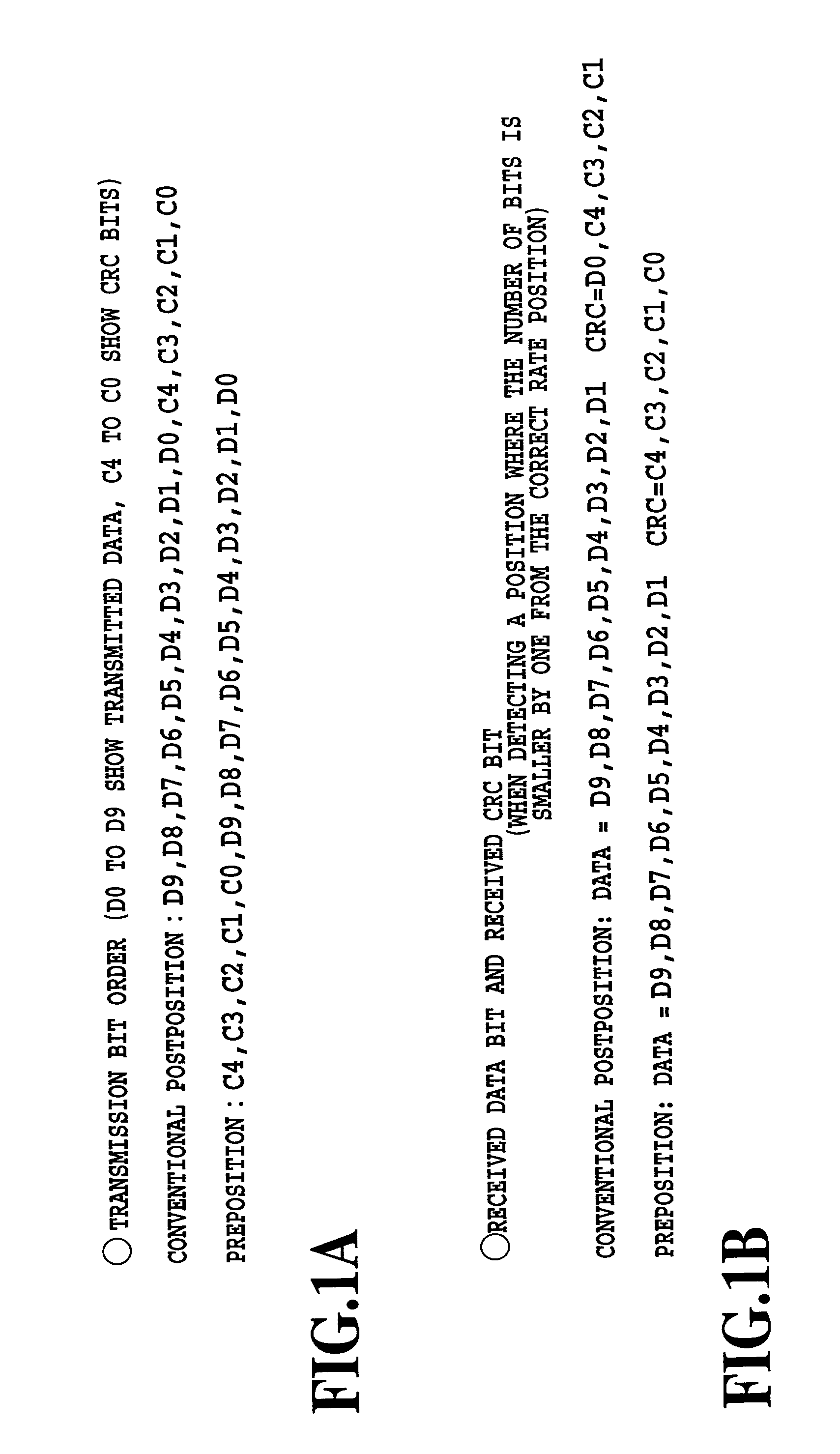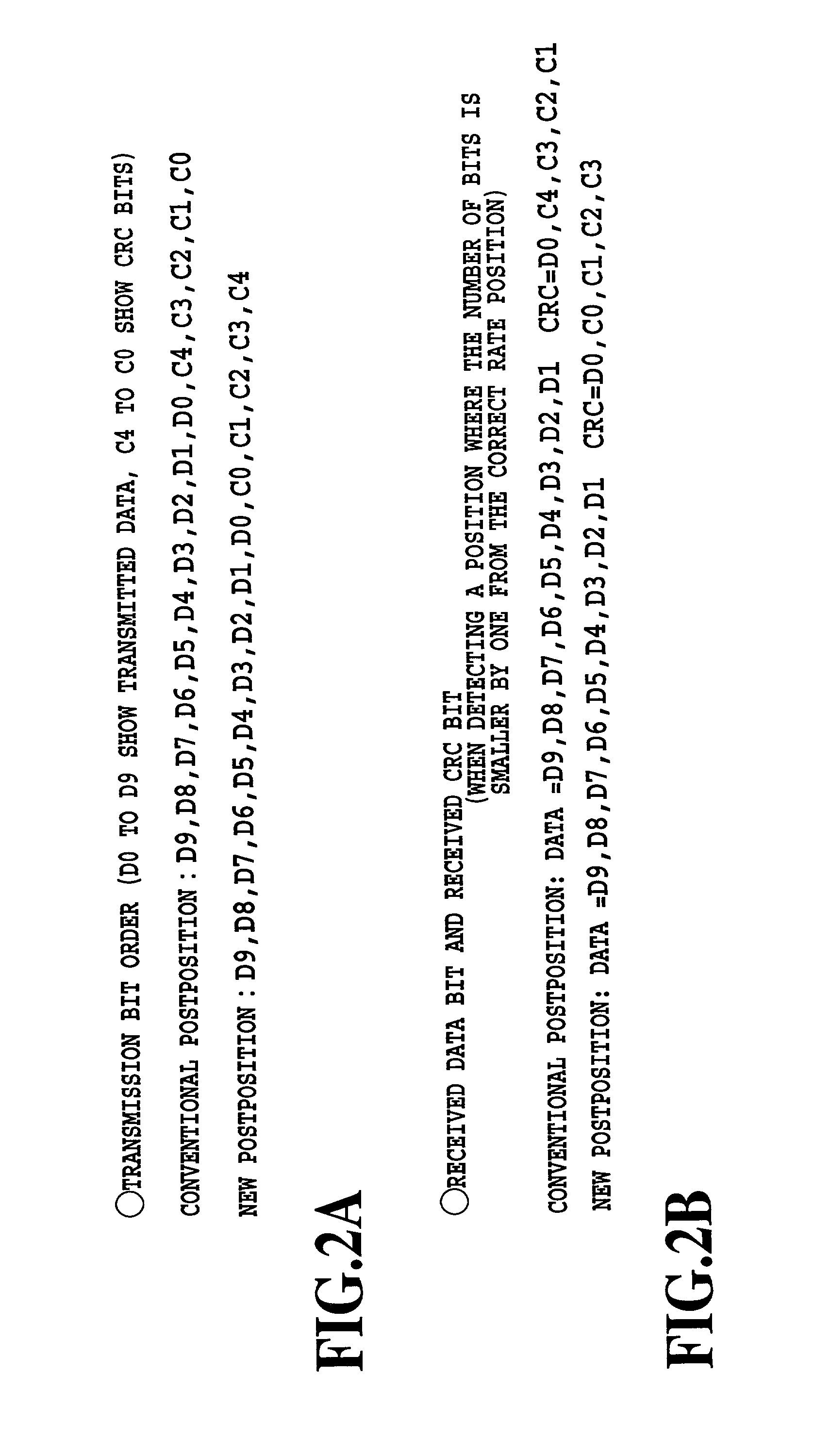Data transmission method, data transmission system, transmitter and receiver
a data transmission system and data transmission technology, applied in the field of data transmission methods, data transmission systems, transmitters and receivers, can solve problems such as difficulty in detecting the rate of error, hardware scale of the memory, and inability of the receiving side to reproduce the transmitted data correctly, so as to reduce the probability of detecting the ra
- Summary
- Abstract
- Description
- Claims
- Application Information
AI Technical Summary
Benefits of technology
Problems solved by technology
Method used
Image
Examples
first embodiment
[0429]FIGS. 3A and 3B show examples of block constructs of a transmitter and a receiver in a first embodiment of the present invention.
[0430]In FIGS. 3A and 3B, a transmitted data sequence applied to a terminal 1 is sent both to an error-detecting coder 4 and to a multiplexer 6. The error-detecting coder 4 calculates the error-detecting code (in this embodiment, CRC parity bits (in short, CRC bits)) for one frame of the transmitted data. In this embodiment, the word length of the CRC bits is a fixed length.
[0431]Next, the multiplexer 6 arranges the error-detecting code (the CRC bits) calculated by the error-detecting coder 4 after the transmitted data. Here, the bit arrangements of the transmitted data and of the error-detecting code are set in a reverse order to each other. Concretely, in this embodiment, the error-detecting coder 4 outputs the error-detecting code bits in a reverse order to the normal case.
[0432]By the way, in this embodiment, to conduct the error-correcting codin...
second embodiment
[0460]FIGS. 10A and 10B show examples of the block constructs of a transmitter and a receiver in a second embodiment according to the present invention.
[0461]In the configuration of FIGS. 10A and 10B, transmission of information indicating the rate of the transmitted data is added to the configuration of FIGS. 3A and 3B, and the receiving side uses this rate information additionally to make the rate decision. In FIGS. 10A and 10B, all the parts common to those of the configurations of FIGS. 3A and 3B are denoted by the same numerals. Description of operations will be given below, focusing on parts different from those of FIGS. 3A and 3B.
[0462]First, information indicating the rate of the transmitted data (transmission rate information) that is applied to the terminal 5 is sent to a rate information memory 40. Here, the contents of the rate information memory 40 are information indicating the rate information of the transmitted data, namely, the number of bits. A multiplexer 6′ outpu...
third embodiment
[0474]In the first embodiment and the second embodiment, it is possible that, considering a case where the number of bits of the transmitted data becomes zero, if the number of bits of the transmitted data is zero at the transmitting side, the frame data is generated by considering the previously-specified bit pattern to be the error-detecting code. It is possible that at the receiving side, a position where the number of bits of the transmitted data becomes zero is also assumed as the final bit position of the frame data (that is, in FIG. 13, a position where L=0 is also assumed as the final bit position of the frame data), and if the error-detecting code in the case of the the assumption agrees with the above-mentioned previously-specified bit pattern, a decision that the position where the number of bits of the transmitted data becomes zero is the final bit position of the frame data is made.
[0475]In actual data transmissions, there is a case where the number of bits of the trans...
PUM
 Login to View More
Login to View More Abstract
Description
Claims
Application Information
 Login to View More
Login to View More - R&D
- Intellectual Property
- Life Sciences
- Materials
- Tech Scout
- Unparalleled Data Quality
- Higher Quality Content
- 60% Fewer Hallucinations
Browse by: Latest US Patents, China's latest patents, Technical Efficacy Thesaurus, Application Domain, Technology Topic, Popular Technical Reports.
© 2025 PatSnap. All rights reserved.Legal|Privacy policy|Modern Slavery Act Transparency Statement|Sitemap|About US| Contact US: help@patsnap.com



